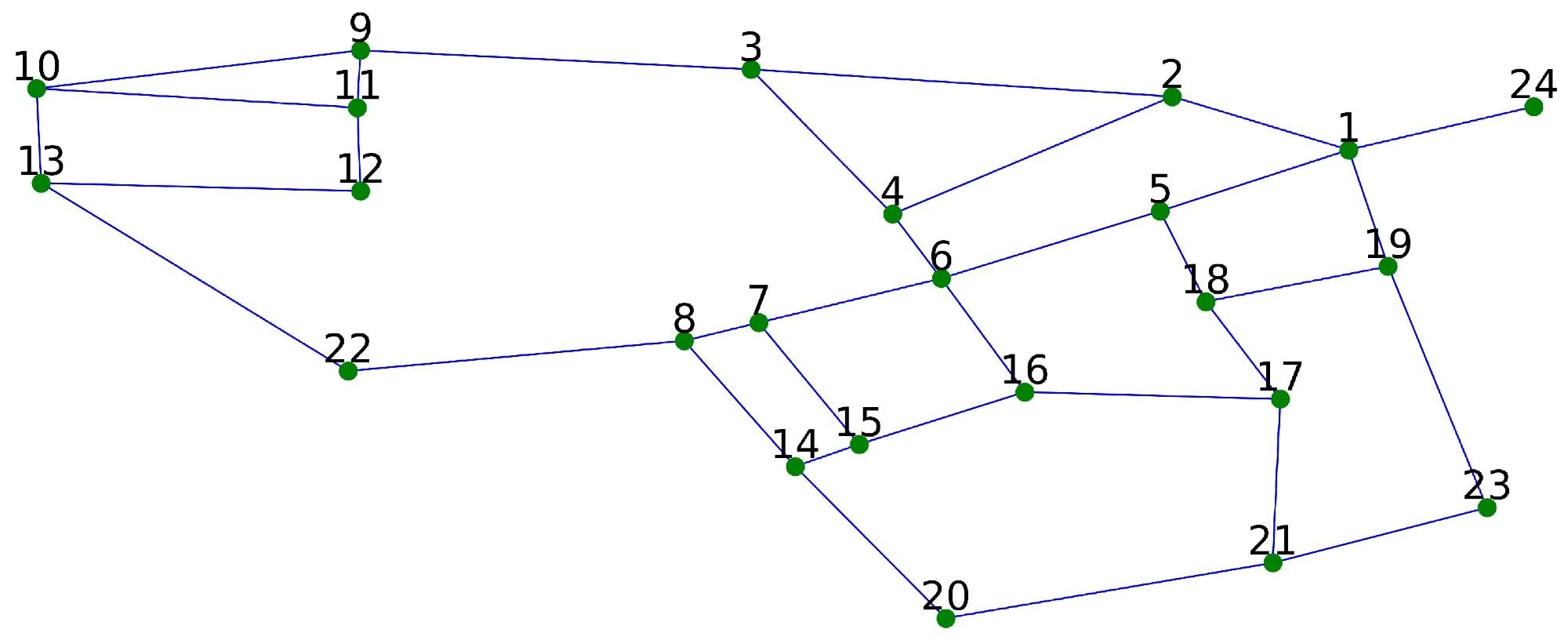In an article published in the journal Water, researchers presented an innovative methodology for optimal sensor placement in water infrastructure to support the development of digital twins. A key innovation was a metamodel that estimated pressure at consumption nodes, guiding sensor configuration to minimize estimation errors. Tested on a synthetic case study, the methodology demonstrated accurate pressure estimates, showcasing its potential for enhancing digital twins in water distribution systems.
 Study: Optimal Sensor Placement Enhances Digital Twins in Water Systems. Image Credit: The KonG/Shutterstock
Study: Optimal Sensor Placement Enhances Digital Twins in Water Systems. Image Credit: The KonG/Shutterstock
Background
Climate change is increasingly challenging urban water management, leading to more frequent droughts and floods that strain existing infrastructure. Most current systems are ill-equipped to adapt, necessitating innovative, data-driven solutions for sustainable water management. Recent advances in hydroinformatics and computational power have enabled the development of models and tools to optimize water resource use, predict demand, and improve efficiency.
Previous research has explored various methodologies for optimal sensor placement in water networks, focusing on tasks like anomaly detection and contaminant monitoring. However, these methods often rely on conventional hydraulic models, which may not fully exploit the potential of modern data-driven techniques.
This paper addressed these gaps by proposing an innovative methodology for optimal sensor placement using graph neural networks and a metamodel for pressure estimation. This approach aimed to improve the creation of digital twins for water distribution systems, providing a comprehensive decision support system that integrated real-time data for improved management and operational decision-making.
Methodology for Optimal Sensor Placement in Water Distribution Networks
The process involved three main steps, data generation, particle swarm optimization (PSO), and metamodel training.
Initially, a dataset was created through multiple network simulations using the Environmental Protection Agency Network evaluation tool (EPANET) hydraulic solver, varying parameters such as nodal demands and pipe roughness. This dataset trained and tested the metamodel, a graph convolutional network (GCN) designed to estimate network pressures from sensor measurements.
The PSO algorithm iterated to find the optimal sensor configuration, minimizing the error in pressure estimation by the metamodel. Each PSO iteration involved training a different GCN metamodel and evaluating its performance based on mean squared error (MSE). The metamodel's adjacency matrix was built from the correlation of sensor measurements, and the GCN extracted spatial information to estimate pressures.
The PSO used was the speed-constrained multi-objective PSO (SMPSO), which prevented swarm explosion and used an external archive for non-dominated solutions. The study employed fixed hyperparameters for the GCN model due to computational constraints, and all models were implemented in Python using Spektral and TensorFlow libraries.
Application to the Apulian Water Network
The authors used the Apulian network, a well-known test case in water network research, to validate the proposed methodology for optimal sensor placement. The network contained a reservoir, 23 nodes, and 34 pipes, making it suitable for a proof of concept.
 Layout of the water network used in this study. Image Credit: https://www.mdpi.com/2073-4441/16/13/1835
Layout of the water network used in this study. Image Credit: https://www.mdpi.com/2073-4441/16/13/1835
A data generation procedure created a dataset with slight variations in pipe roughness and demand patterns, producing 10,000 samples for training and testing the metamodel. The researchers employed the water network tool for resilience (WNTR) library in Python for simulations, focusing on steady-state conditions without anomalies to ensure the metamodel was informed by physically based data.
Performance Evaluation and Results
The results of the proposed methodology were tested on the synthetic Apulian network, focusing on the metamodel's ability to accurately estimate pressure at various nodes. The dataset was divided into training (80%) and testing (20%) portions. The metamodel's performance was evaluated using MSE and mean absolute error (MAE) metrics, averaged over ten models due to stochastic variations in training.
Almost all network configurations produced good results, with an average estimation error of around 0.1 meters (m). The performance improved with more sensors, although some configurations with fewer sensors performed better due to differences in the number of estimated nodes.
The models passed the Kolmogorov–Smirnov test, confirming their reliability. The methodology showed promise for future digital twin development, offering an optimal sensor configuration for accurate pressure estimation in water distribution networks.
Analysis and Limitations
The proposed methodology introduced an innovative sensor placement approach to minimize pressure estimation error using a metamodel, aiming to develop digital twins. Results showed promising accuracy in sensor positioning, enhancing the metamodel's pressure estimation. However, this proof of concept had limitations, including reliance on regular data without anomalies and the need for testing on more complex networks. Computational requirements were high, with training times and PSO algorithm convergence taking significant time on a conventional laptop. Future work should address these limitations and optimize the process for larger networks.
Conclusion
In conclusion, the researchers presented an innovative methodology for optimal sensor placement in water infrastructure, leveraging a metamodel based on graph neural networks to estimate the pressure at network nodes. Tested on the Apulian network, results demonstrated accurate pressure estimation, highlighting the potential for enhancing digital twins in water distribution systems.
Despite limitations such as reliance on regular data and computational intensity, the approach showed promise for future applications. Future research aimed to extend this methodology to more complex networks and incorporate multi-objective optimizations, including anomaly detection and leakage prevention, while further exploring graph learning for robust digital twin implementation.
Journal reference:
- Menapace, A., Zanfei, A., Herrera, M., & Brentan, B. (2024). Graph Neural Networks for Sensor Placement: A Proof of Concept towards a Digital Twin of Water Distribution Systems. Water, 16(13), 1835. DOI: 10.3390/w16131835, https://www.mdpi.com/2073-4441/16/13/1835